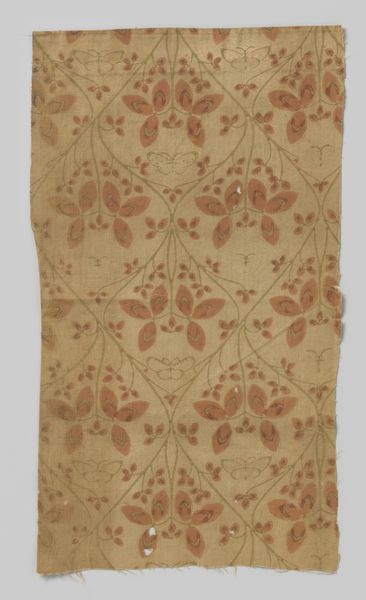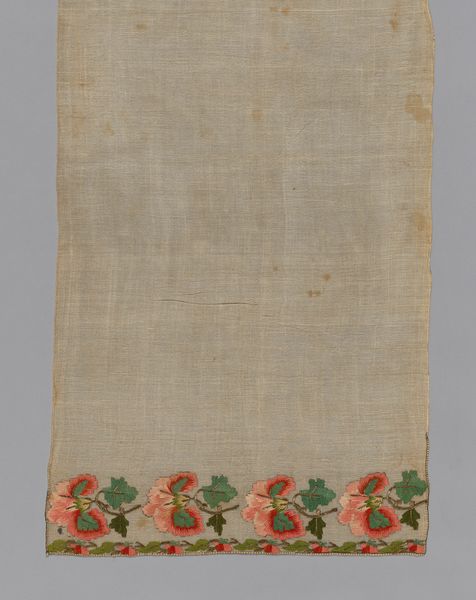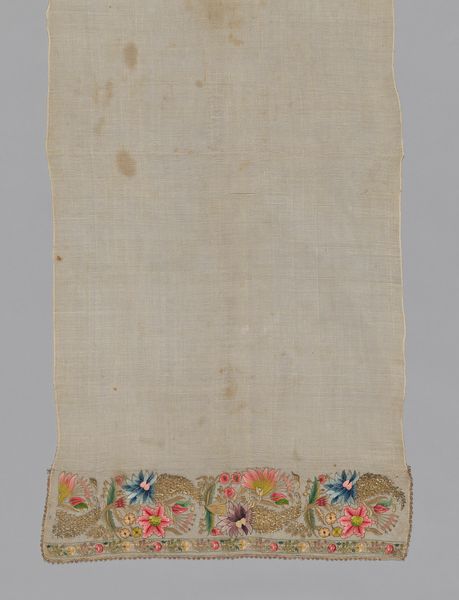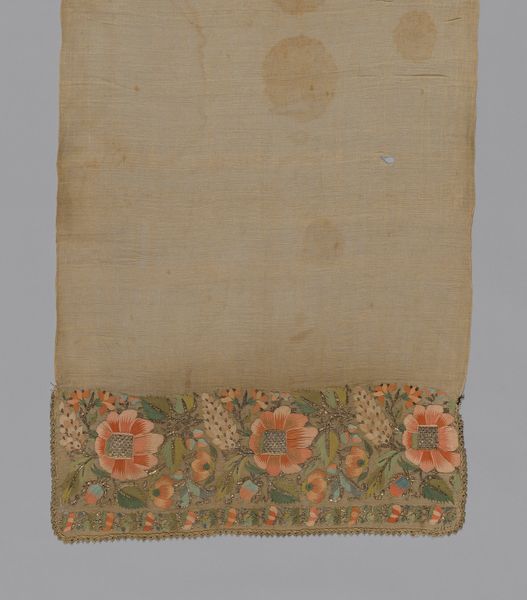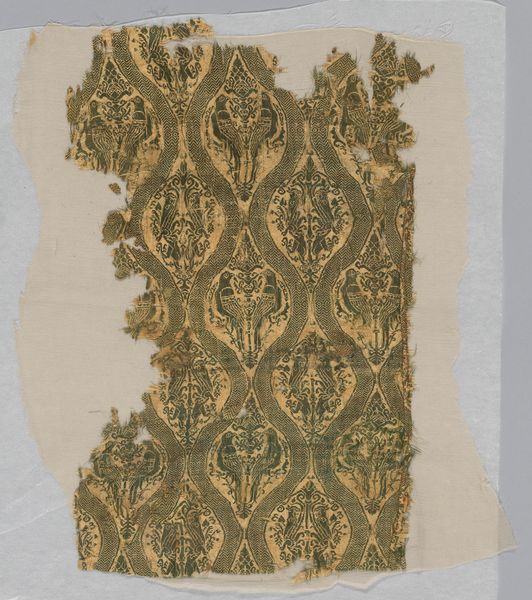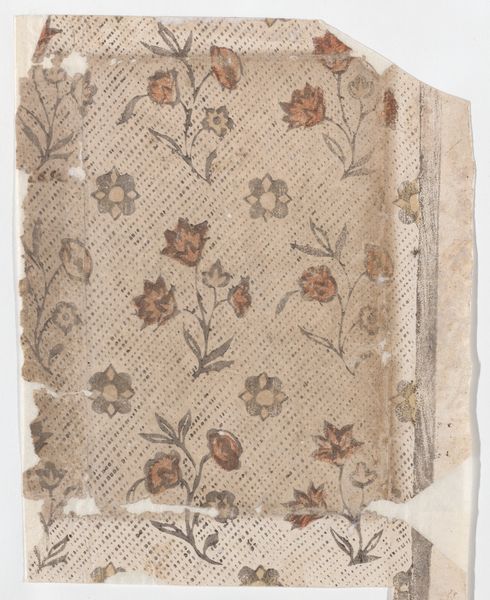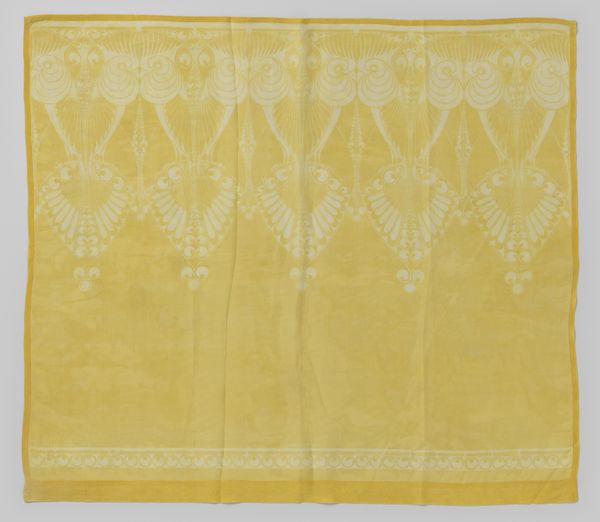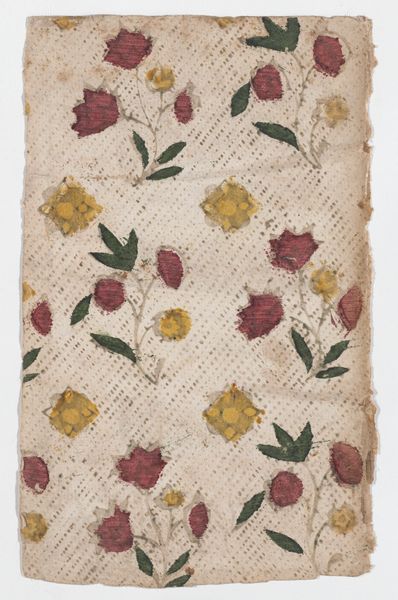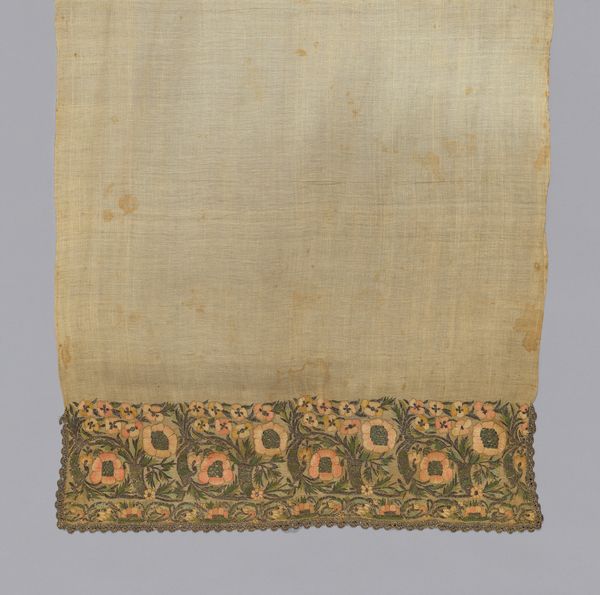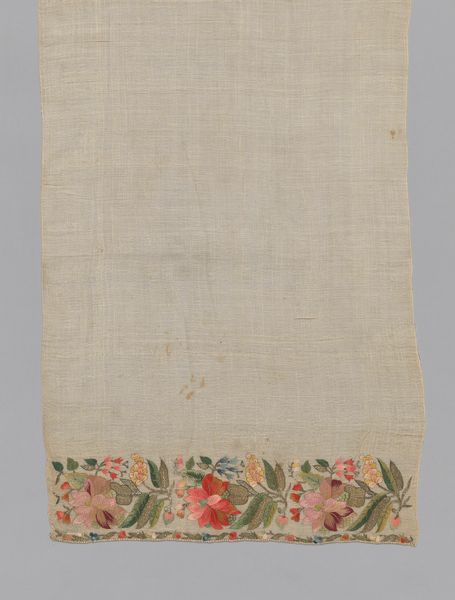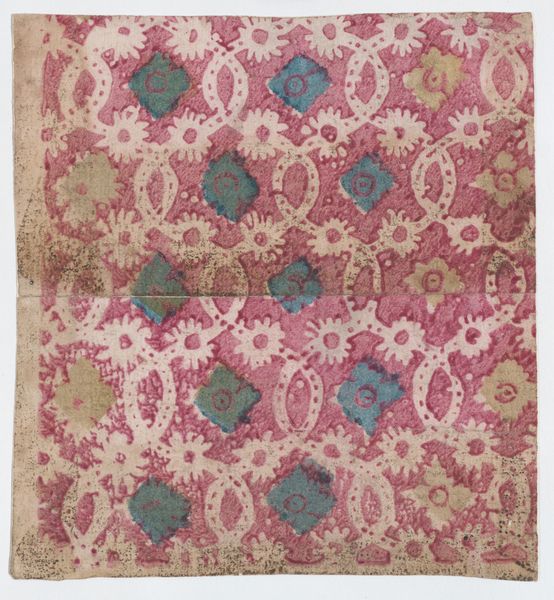
Fragment bedrukte cretonne met patroon van klaver met vlinder binnen spitsovalen 1900 - 1925
0:00
0:00
theonieuwenhuis
Rijksmuseum
mixed-media, fibre-art, weaving, textile
#
mixed-media
#
fibre-art
#
art-nouveau
#
weaving
#
textile
#
fashion and textile design
#
fabric design
#
pattern repetition
#
textile design
#
decorative-art
Dimensions: height 34.5 cm, width 27.0 cm
Copyright: Rijks Museum: Open Domain
Editor: This is a fragment of printed cretonne from somewhere between 1900 and 1925, made by Theo Nieuwenhuis. It’s a pattern of clovers and butterflies inside pointed ovals. I’m really drawn to the color palette; there's something so comforting and familiar about it. How would you interpret this textile within its historical context? Curator: The choice of subject and the Art Nouveau style are definitely of their time. Think about the burgeoning middle class at the turn of the century. They aspired to elegance and culture. Fabrics like this offered accessible beauty. The rise of industrial printing allowed for wider distribution, didn’t it? How might that impact perceptions of "high" versus "low" art? Editor: That’s interesting. So, this kind of textile democratized design to some extent? Made art accessible in the everyday? Curator: Exactly. And consider the subject matter: clovers and butterflies. Natural motifs were very popular, reflecting a longing for the pastoral ideal amid rapid industrialization. Were these symbols loaded with socio-political meaning? Probably not overtly, but consider that Art Nouveau, even in textiles, became part of visual vocabulary accessible to wider groups of the population than ever before. Editor: It's interesting to think about it being almost a radical act of bringing art to the masses through textiles! I always assumed printed fabrics were just decorative. Curator: That’s the beauty of historical analysis; it can reframe our understanding. Objects we consider mundane can be potent carriers of cultural meaning and social change. So what’s your biggest takeaway from this analysis? Editor: I suppose I had never considered the social implications of accessible design and how it relates to class and society’s yearning for simpler times. Thanks for that, it changes everything about how I look at patterned fabrics!
Comments
No comments
Be the first to comment and join the conversation on the ultimate creative platform.
